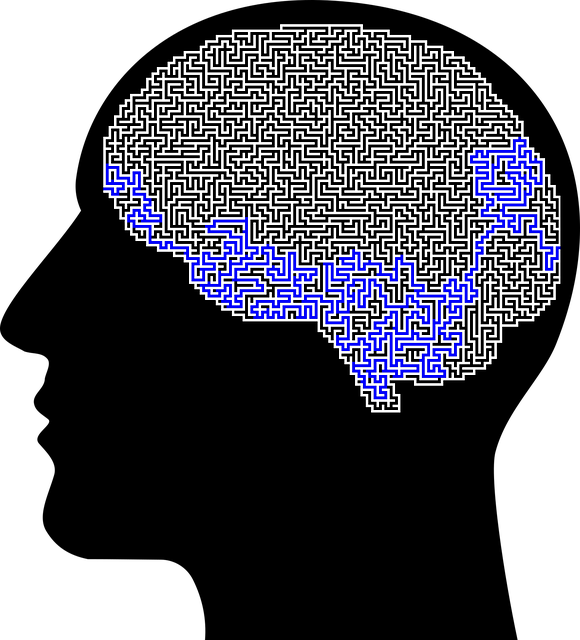Mental wellness programs, including specialized initiatives like Castle Rock Child Abuse Therapy (CRCAT), require rigorous evaluation to ensure effectiveness and inform policy. This involves understanding objectives, target demographics, and theoretical frameworks, integrating risk management, cultural competency, and comprehensive assessment methods. Evaluating CRCAT uses a multifaceted approach combining mental health policy tools and advocacy methodologies, focusing on fostering emotional intelligence and crisis intervention for abused children. Researchers utilize both qualitative (interviews, focus groups) and quantitative (surveys, standardized assessments) methods to capture program success holistically, tracking changes in emotional regulation, social skills, conflict resolution, and mental health indicators. This comprehensive evaluation ensures interventions enhance participants' emotional well-being and inform strategies to mitigate long-term abuse impacts within communities.
Mental wellness programs play a pivotal role in fostering resilience, especially among vulnerable populations like children affected by abuse. Evaluating these programs is crucial for understanding their effectiveness, identifying areas of improvement, and ensuring resources are allocated efficiently. This article explores various evaluation methods, from qualitative to quantitative approaches, focusing on the successful Castle Rock Child Abuse Therapy Programs as a case study. By examining these strategies, we gain insights into measuring success, enhancing services, and optimising mental wellness outcomes for children in need.
- Understanding Mental Wellness Programs: A Foundation for Evaluation
- Assessing the Effectiveness of Castle Rock Child Abuse Therapy Programs
- Qualitative vs Quantitative Methods: Unlocking Different Perspectives
- Measuring Success and Impact: Tools for Continuous Improvement
Understanding Mental Wellness Programs: A Foundation for Evaluation

Mental wellness programs are designed to support individuals and communities by addressing a range of mental health concerns, from stress management and depression prevention to trauma recovery and risk management. These programs often incorporate evidence-based practices tailored to specific populations, such as Castle Rock Child Abuse Therapy, which focuses on helping young victims heal and develop healthy coping mechanisms. Understanding the foundational elements of these programs is crucial for effective evaluation.
Evaluation methods should start with a comprehensive grasp of program objectives, participant demographics, and the theoretical frameworks guiding the interventions. By integrating risk management planning for mental health professionals, healthcare provider cultural competency training, and other relevant strategies, evaluators can ensure that assessments accurately capture both short-term outcomes and long-term impacts. This holistic approach not only measures the success of individual programs but also contributes to a broader understanding of best practices in mental wellness promotion.
Assessing the Effectiveness of Castle Rock Child Abuse Therapy Programs

Evaluating the effectiveness of Castle Rock Child Abuse Therapy (CRCAT) programs is a multifaceted process that integrates various mental health policy analysis and advocacy methodologies. The primary goal is to ascertain whether these interventions are achieving their intended outcomes, particularly in fostering emotional intelligence and providing crisis intervention guidance for children exposed to abuse. This involves rigorous data collection, including pre- and post-program assessments, interviews with participants, and observations to measure changes in behavior, emotional regulation, and trauma responses.
The assessment framework should consider the unique needs of each child and incorporate qualitative and quantitative measures. By examining improvements in mental health status, coping mechanisms, and social interactions, researchers can validate the program’s success in enhancing resilience and reducing the long-term impacts of abuse. This approach not only guides improvements in CRCAT but also informs policy decisions related to emotional intelligence development and crisis intervention strategies within affected communities.
Qualitative vs Quantitative Methods: Unlocking Different Perspectives

When evaluating mental wellness programs, researchers often employ either qualitative or quantitative methods, each offering unique insights into participants’ experiences and outcomes. Qualitative approaches, such as interviews and focus groups, provide in-depth, narrative perspectives. This method is particularly valuable for understanding complex phenomena like emotional well-being promotion techniques within Castle Rock Child Abuse Therapy settings. It allows participants to share personal stories, revealing the nuances of self-care practices and stress reduction methods they encountered during their journeys.
On the other hand, quantitative methods involve collecting and analyzing numerical data through surveys and experiments. This approach helps identify trends and patterns across a large sample size, offering a broader view of program effectiveness. By combining both qualitative and quantitative techniques, researchers can gain a comprehensive understanding of mental wellness programs, ensuring that interventions are not only statistically significant but also holistically beneficial for participants’ emotional well-being.
Measuring Success and Impact: Tools for Continuous Improvement

Measuring Success and Impact is a crucial step in evaluating any mental wellness program, ensuring its effectiveness and fostering continuous improvement. This process involves employing various tools to assess the program’s outcome on participants’ lives. One such tool is the use of client feedback through surveys or interviews, providing insights into their satisfaction levels and perceived improvements in areas like Emotional Regulation, Social Skills Training, and Conflict Resolution Techniques.
Additionally, quantitative data analysis can capture significant changes in mental health indicators before and after program implementation. For instance, tracking participants’ scores on standardized assessments related to anxiety, depression, or trauma symptoms can demonstrate the program’s impact at a population level. These methods, combined with observations of enhanced engagement and positive behavior changes within Castle Rock Child Abuse Therapy sessions, offer comprehensive evidence of successful program outcomes.
The evaluation of mental wellness programs, such as the Castle Rock Child Abuse Therapy initiatives, is a multifaceted process that requires both qualitative and quantitative approaches. By understanding the foundational elements of these programs and employing diverse assessment methods, we can accurately measure their effectiveness. This article has explored various techniques, from qualitative insights to quantitative data analysis, offering a comprehensive toolkit for evaluating mental health interventions. As we continue to navigate complex challenges like child abuse, refining our evaluation strategies ensures that Castle Rock Child Abuse Therapy programs remain adaptive, responsive, and ultimately successful in fostering positive mental wellness outcomes.














